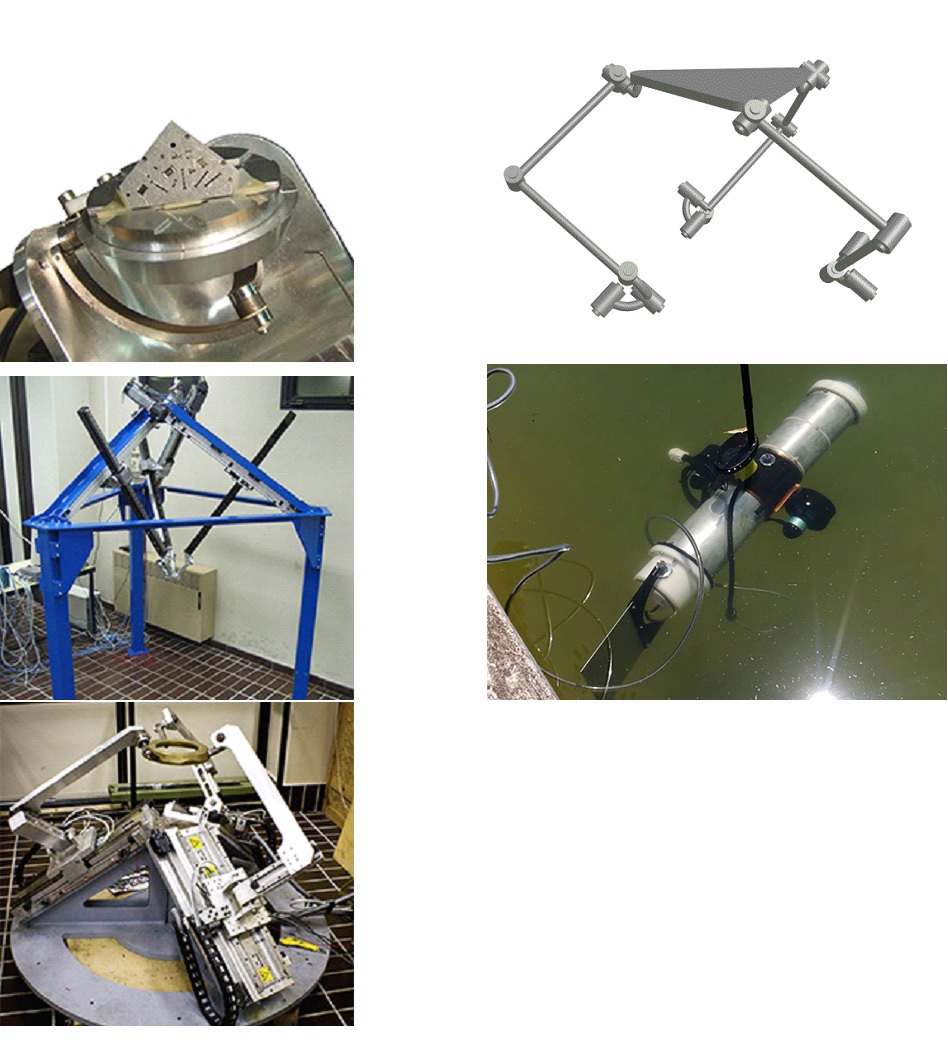Mechatronics and Robotics are the main field of activity of the Machines Mechanics team. Team’s experience covers a wide range of problems ranging from pure research to industrial development and is focused on the study of parallel kinematics machines and on the design of reconfigurable innovative machines. These topics were recently addressed in the context of the Industry 4.0 paradigm and the problems of collaborative robotics were explored too.
COLLABORATIVE ROBOTICS
The collaborative robots, or cobots, are new generation industrial robots designed to work together with the man in safety, without barriers or protective cages to divide them. Cobots are specialized in carrying out tasks that learn directly on the field, are autonomous and are revolutionizing the factory automation sector.
RECONFIGURABLE DEVICES AND MACHINES
A reconfigurable machine is able to show different kinematic modes without losing its structure. This feature can be exploited to increase its flexibility with regard to production processes that may require, within the same task, different skills of dexterity or mobility.
PARALLEL KINEMATIC MACHINES
Parallel kinematic machines are characterized by a mobile platform that is supported and actuated by two or more independent legs; parallel kinematic machines can be designed to have high dynamic performances, great rigidity and high load capacity.
MINIATURIZED DEVICES
Mini-robotics is a cutting-edge research field in precision mechanics which is applied in areas such as biomedical engineering and mechatronics (eg MEMS). The research focuses mainly on new forms of actuators, on the realization of miniaturized and precision mechanical joints and on the design of high precision mini-grippers.
UNDERWATER ROBOTICS
The development of autonomous underwater vehicles (AUV) with increasingly higher performance has driven research into the study of bio-inspired robots. In fact, it is known that the instinctive swimming skills developed by biological systems (marine fish and mammals) over the course of millions of years, are largely superior to what is able to produce modern naval technology.
KINEMATIC CALIBRATION
The Machine Mechanics team has developed skills in kinematic calibration of manipulators: both in the definition of the kinematic error models and the related numerical algorithms for parameters’ estimation and in the experimental measurement techniques.
ADVANCED INDUSTRIAL ROBOTICS APPLICATIONS
Various industrial robotics applications have been developed in unconventional or advanced applications, such as incremental forming or friction stir welding using parallel robots or the creation of a robotic system for the automated recovery of electronic components.

Laboratory of Machine Mechanics
